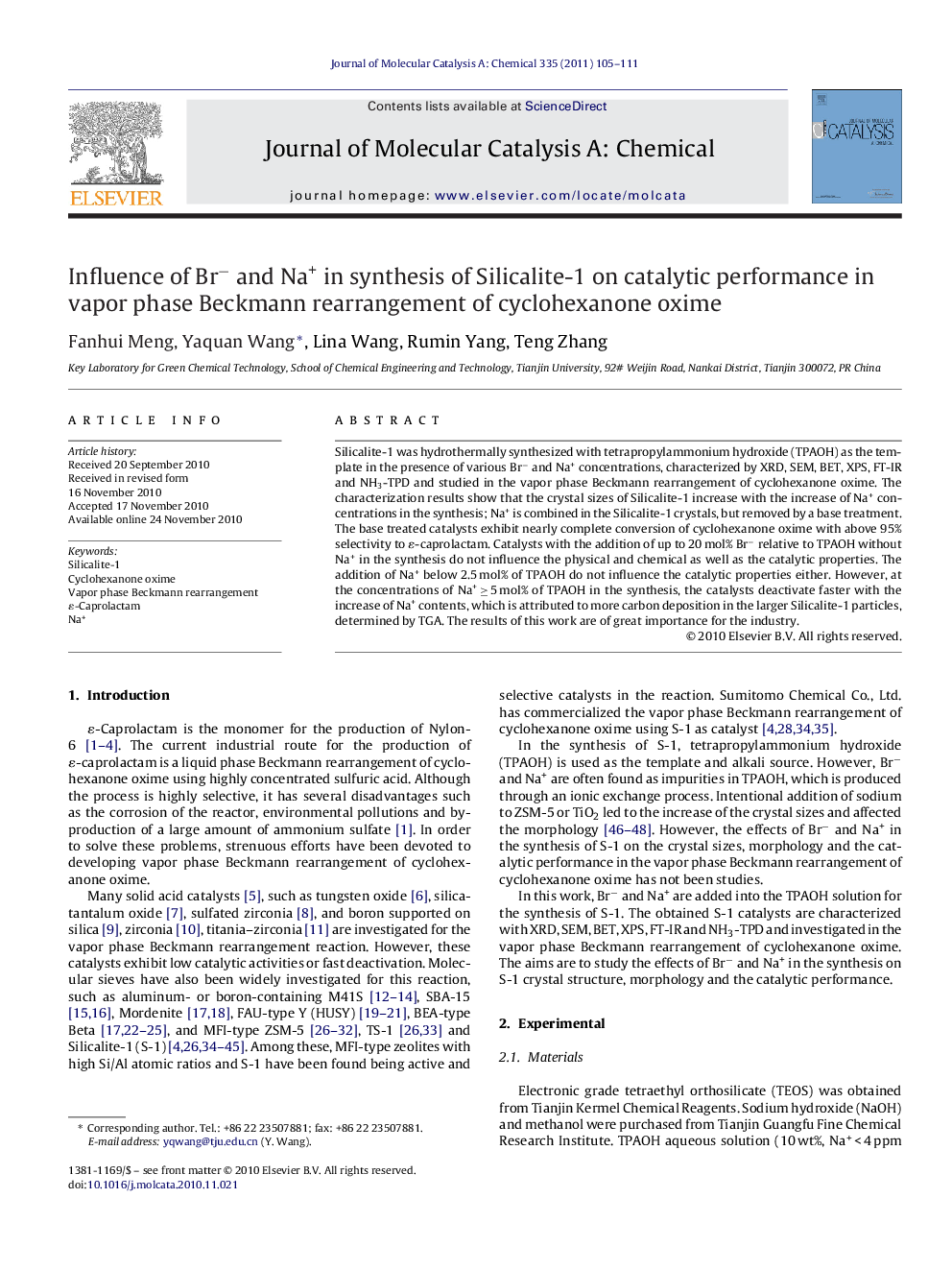| Article ID | Journal | Published Year | Pages | File Type |
|---|---|---|---|---|
| 66571 | Journal of Molecular Catalysis A: Chemical | 2011 | 7 Pages |
Silicalite-1 was hydrothermally synthesized with tetrapropylammonium hydroxide (TPAOH) as the template in the presence of various Br− and Na+ concentrations, characterized by XRD, SEM, BET, XPS, FT-IR and NH3-TPD and studied in the vapor phase Beckmann rearrangement of cyclohexanone oxime. The characterization results show that the crystal sizes of Silicalite-1 increase with the increase of Na+ concentrations in the synthesis; Na+ is combined in the Silicalite-1 crystals, but removed by a base treatment. The base treated catalysts exhibit nearly complete conversion of cyclohexanone oxime with above 95% selectivity to ɛ-caprolactam. Catalysts with the addition of up to 20 mol% Br− relative to TPAOH without Na+ in the synthesis do not influence the physical and chemical as well as the catalytic properties. The addition of Na+ below 2.5 mol% of TPAOH do not influence the catalytic properties either. However, at the concentrations of Na+ ≥ 5 mol% of TPAOH in the synthesis, the catalysts deactivate faster with the increase of Na+ contents, which is attributed to more carbon deposition in the larger Silicalite-1 particles, determined by TGA. The results of this work are of great importance for the industry.
Graphical abstractCatalysts S-1-20Br with up to 20 mol% Br− and S-1-2.5 with 2.5 mol% Br− and Na+ of TPAOH in the synthesis show very good stability as catalyst S-1-0 synthesized in the absence of Br− and Na+. With high concentrations of Na+ in the synthesis, the catalysts deactivate faster.Figure optionsDownload full-size imageDownload high-quality image (90 K)Download as PowerPoint slideResearch highlights▶ Presence of Br− in synthesis does not influence properties and performance of S-1. ▶ Presence of high concentration Na+ in synthesis increases the particle sizes of S-1. ▶ S-1 synthesized in the presence of high concentrations of Na+ deactivate faster. ▶ Na+ below 2.5 mol% of TPAOH can be tolerated in synthesis of S-1 as catalyst.
